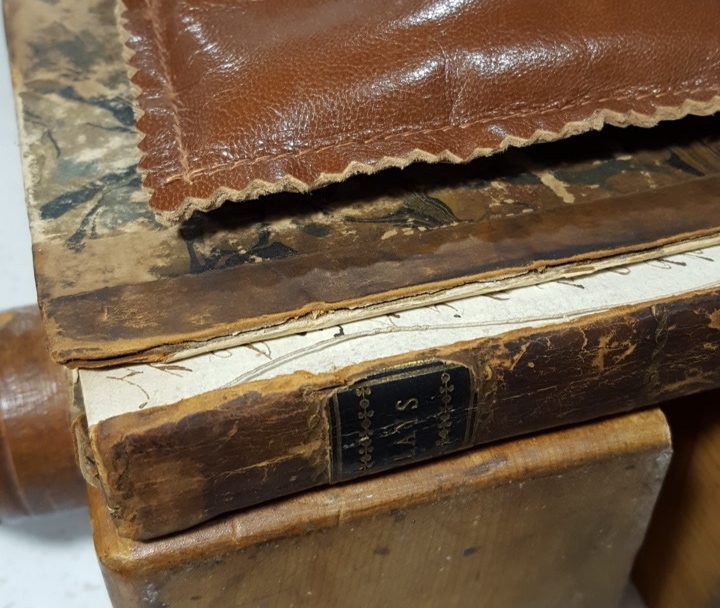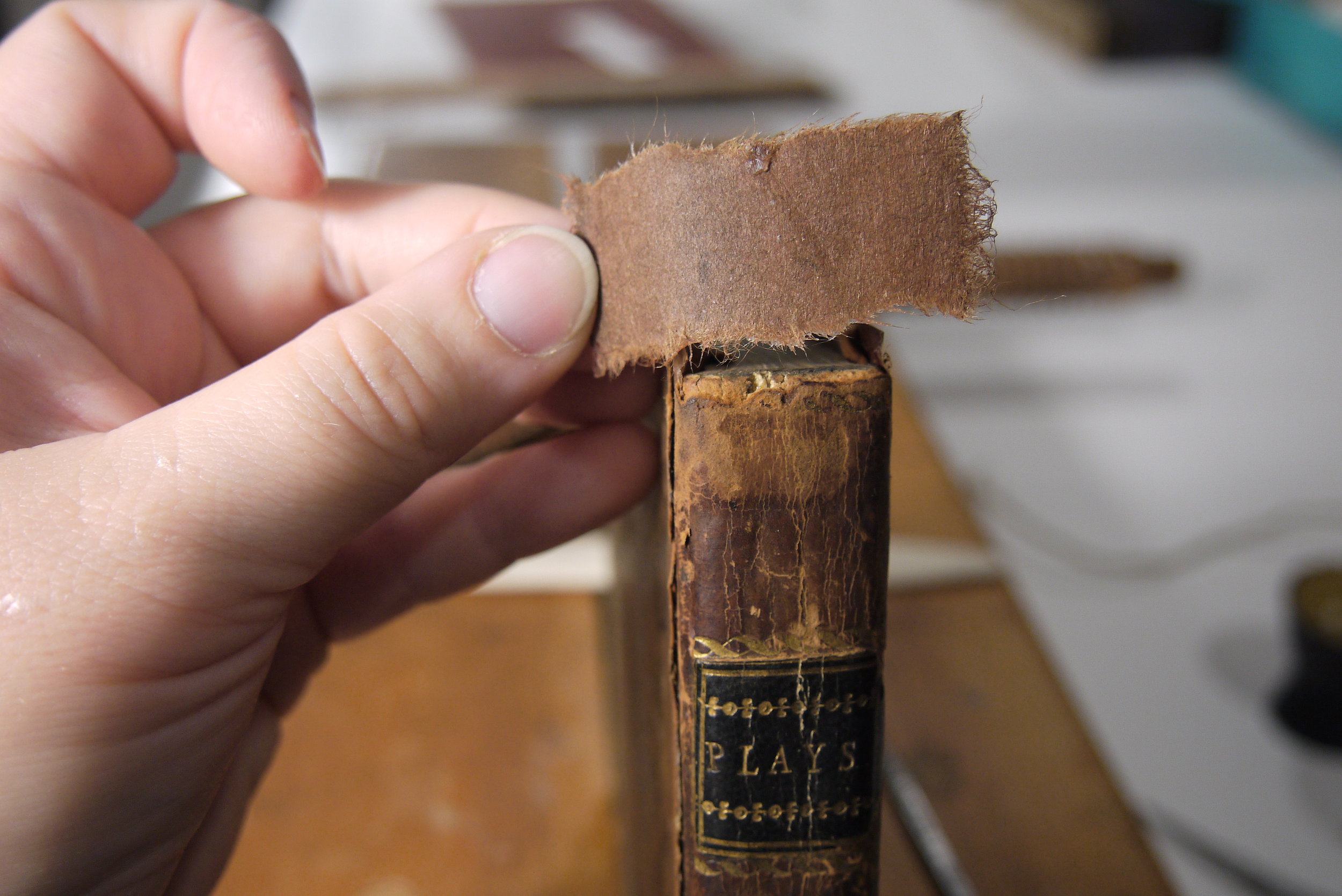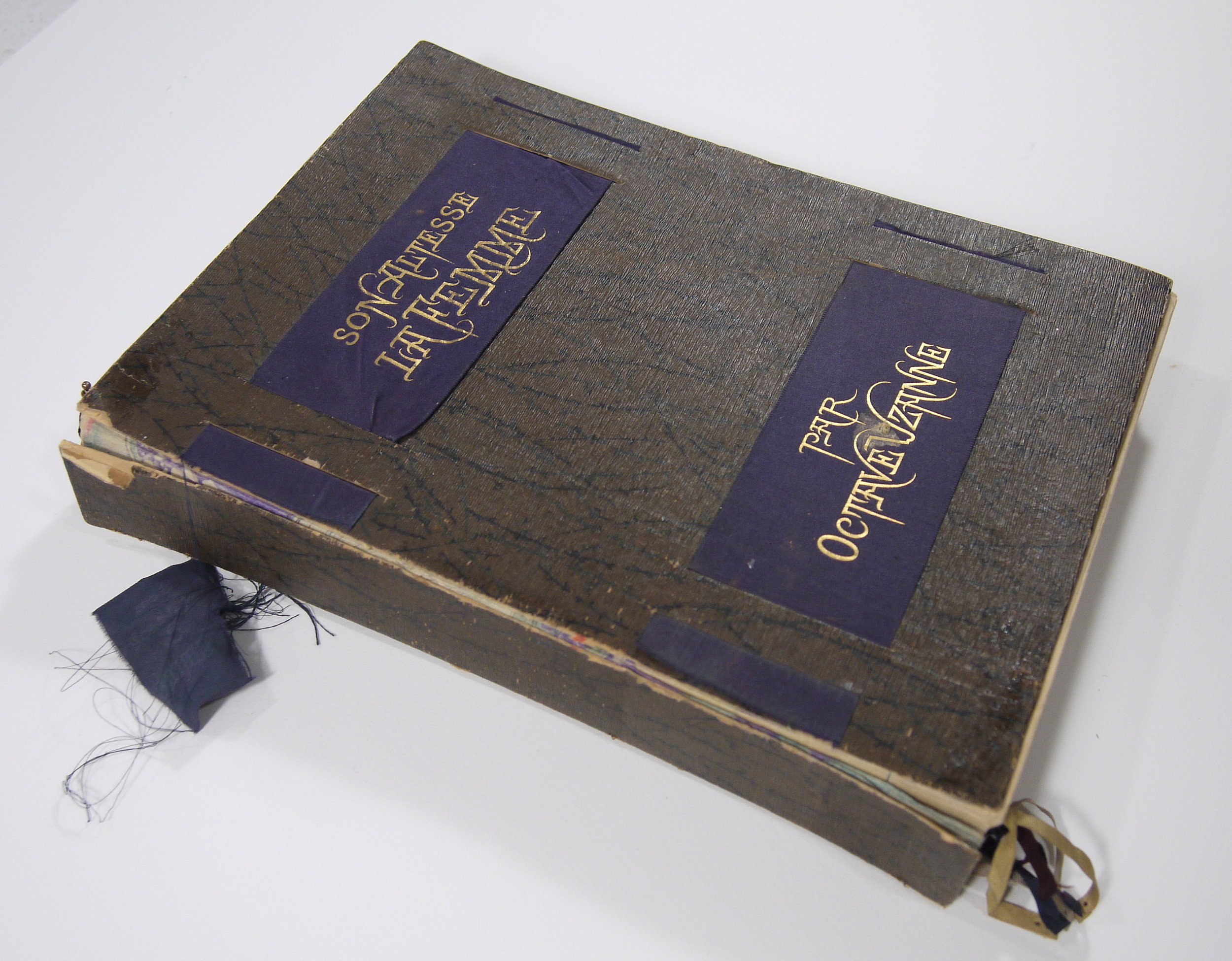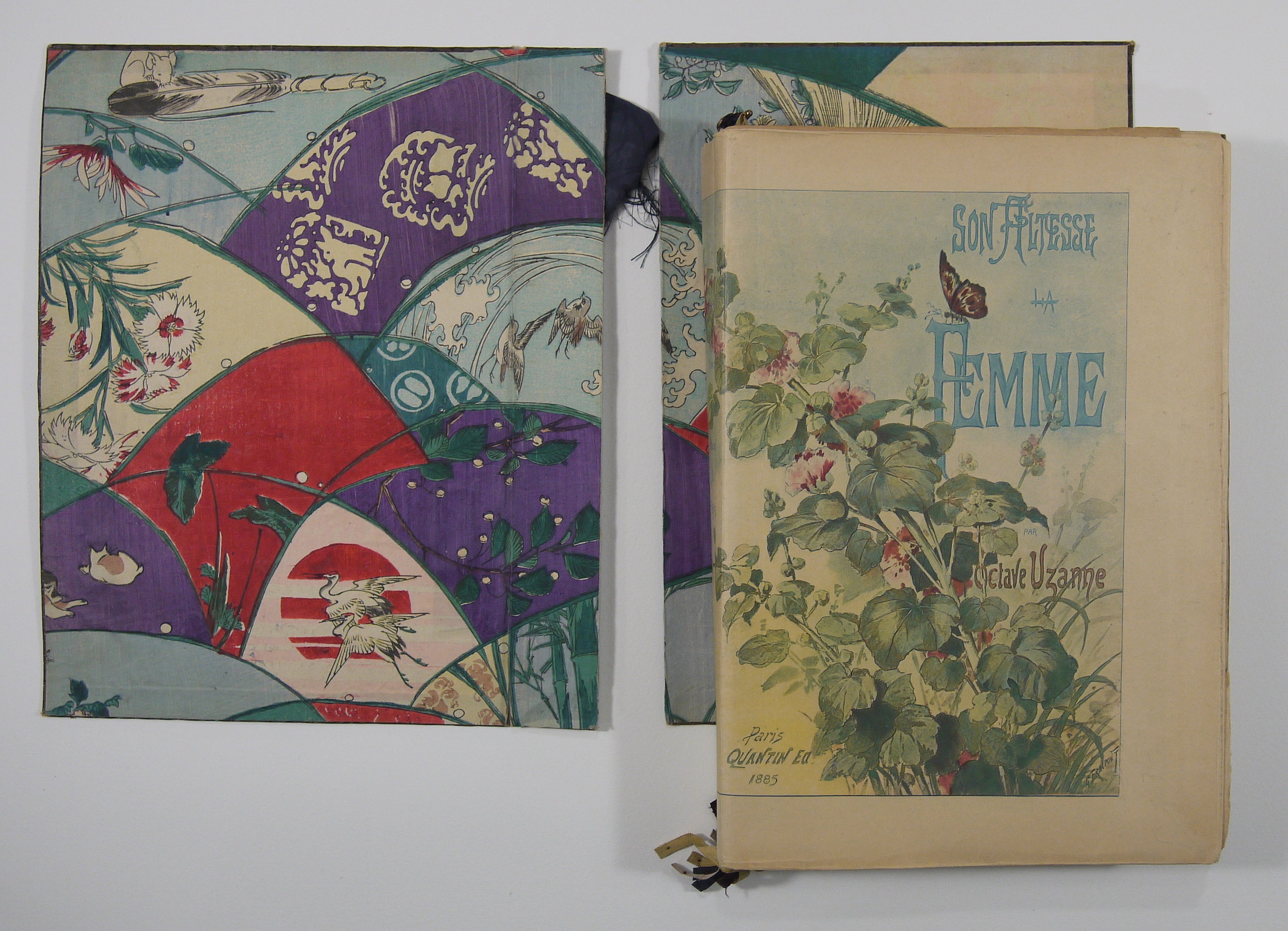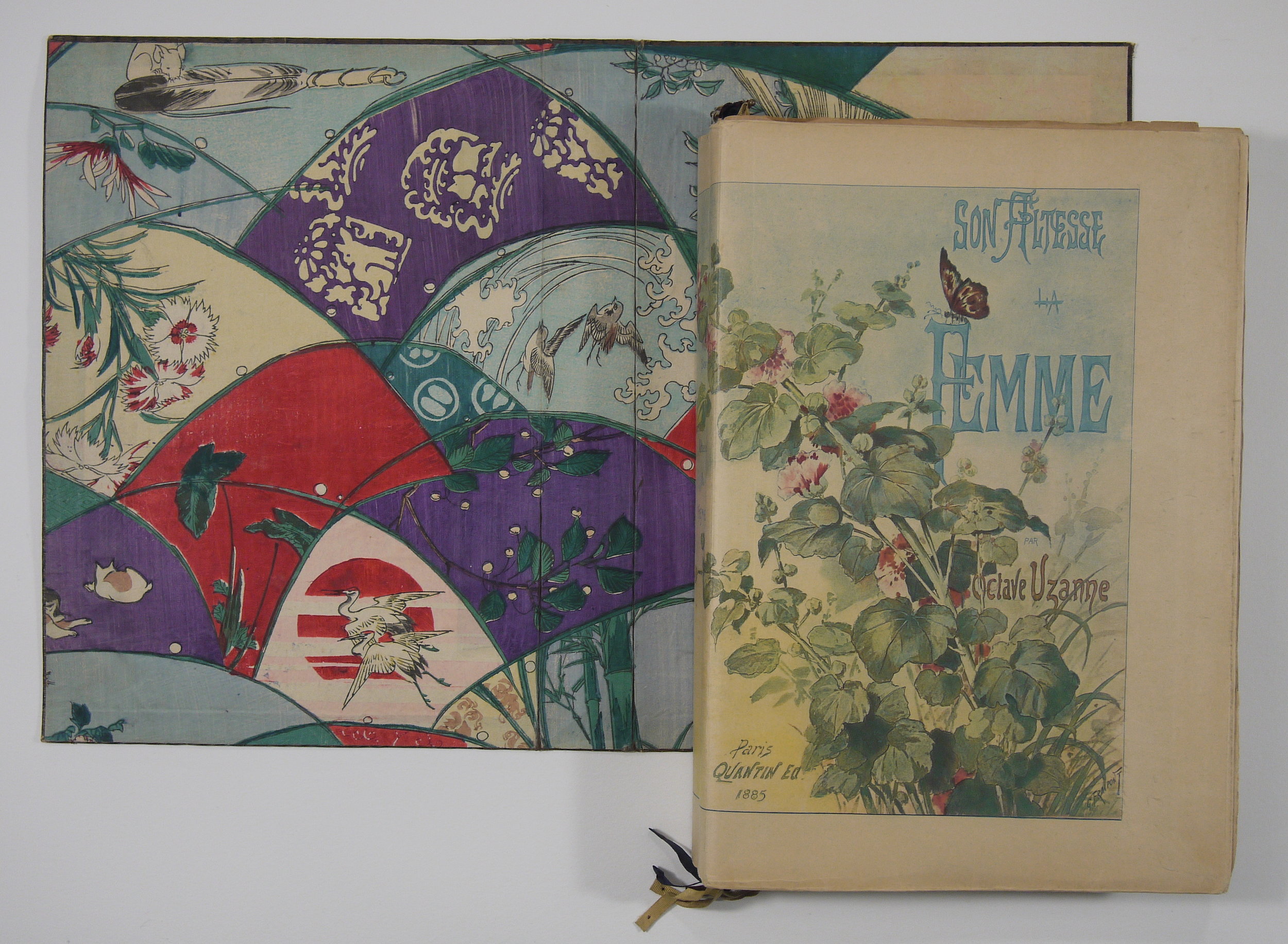Preparing to reattach the covers of a half-leather book.
Book and Paper Conservator Jennifer Robertson was recently featured on Jasper52's blog about rare book collecting. Read a short interview where she describes what got her interested in rare books and conservation.


